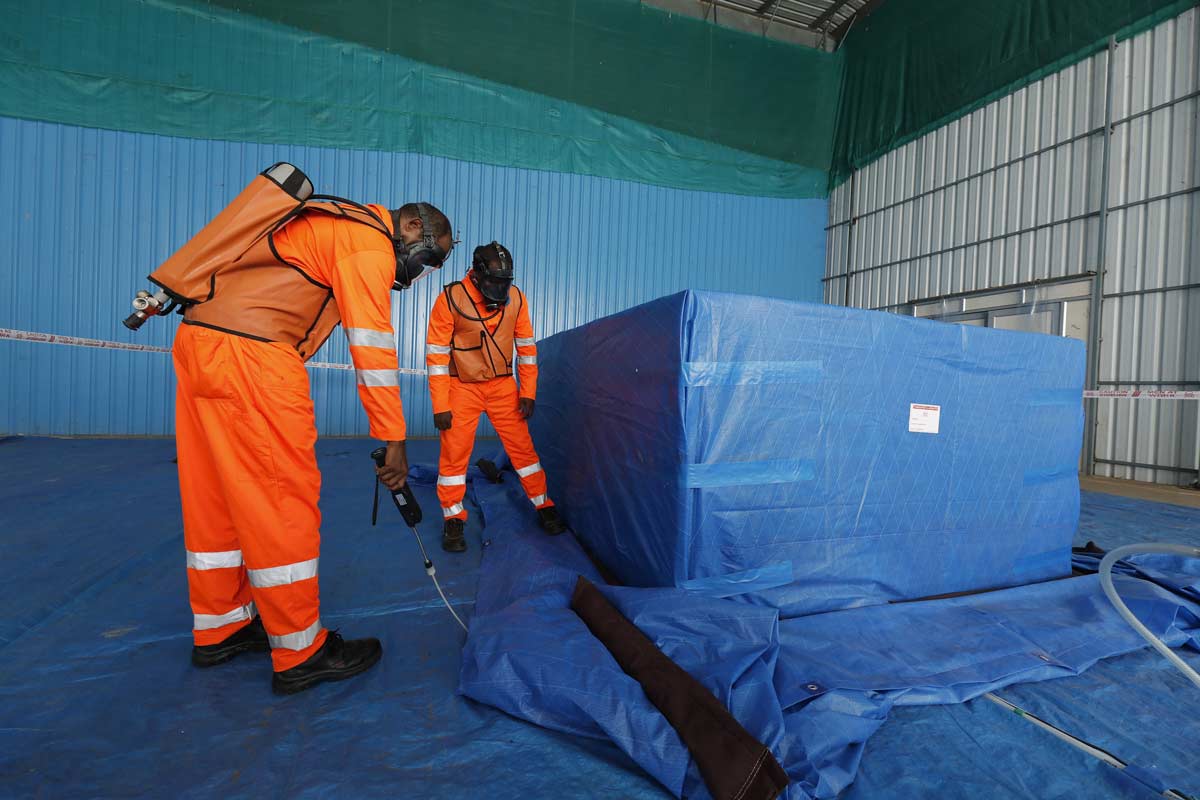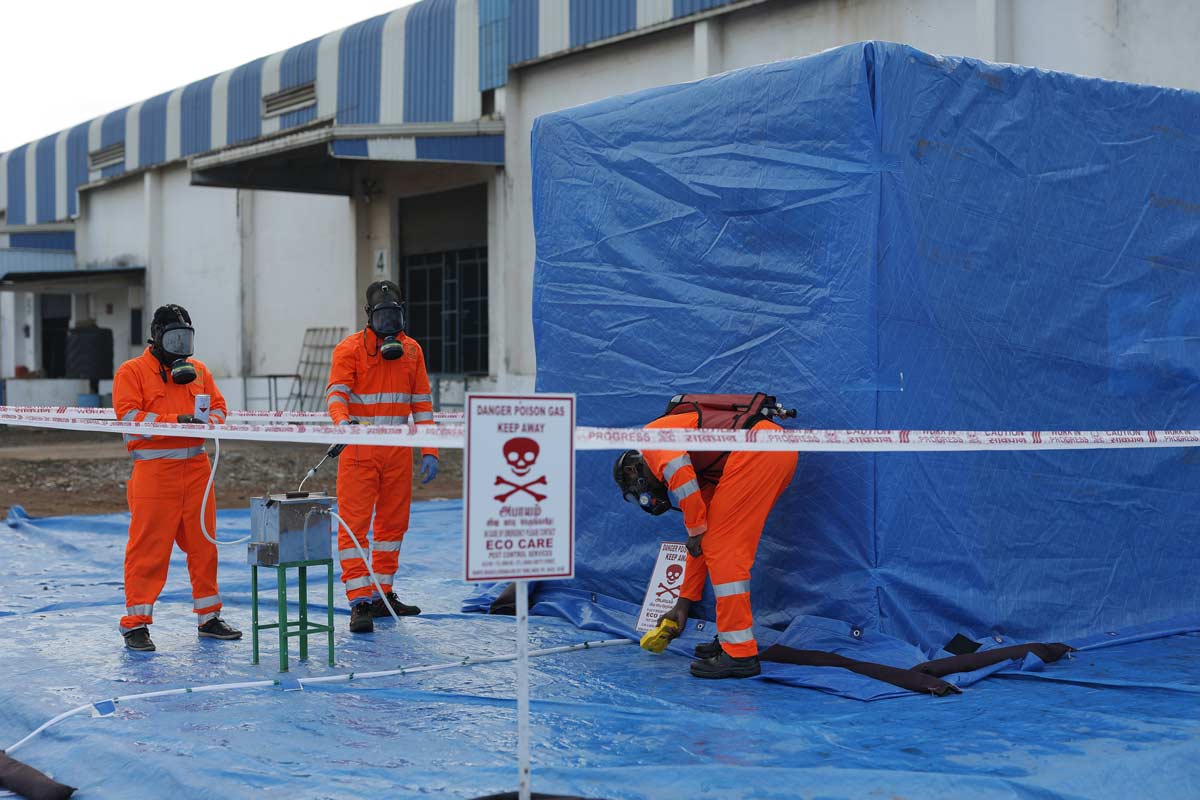
Technical Info

“WE ARE THE MASTERS OF FUMIGATION”
WHAT’S FUMIGATION?
Fumigation is known as the most effective means for targeted control of stored product insects such as beetles, borers, weevils, mites and moths. Fumigation controls damage due to pest in consignments during pre-shipment or in-transit. This ensures that consignment is shipped without the risk of contamination, spread of insects, quarantine rejection and quarantine liability.
FACTORS FOR FUMIGATION
Effective fumigation has to take into consideration a variety of factors and the success of the process depends on the ability to effectively tackle the requirements and align the process accordingly.
- Type of commodity
- Type of commodity packaging
- Quality of packaging material
- Nature of infestation (type of pest)
- Free air space
- Temperature and humidity
- Type of fumigant applied
- Concentration and distribution of gas
- Gas tightness
- Soundness of containers
- Monitoring system
- Sufficient time and maintaining exposure period
- Ventilation system
- Following quarantine guidelines
PLACES TO BE FUMIGATEDThe effectiveness of the whole fumigation process also depends on the place and time of fumigation. A lot depends on the selection of the right place and right time for fumigation which will serve to protect the consignment before, during and on arrival at its destination.
WHAT ARE THE TYPES OF FUMIGATION?
Based on the place of fumigation the types of fumigation is differentiated as:
- STACK FUMIGATION: Which is carried out in warehouses and godowns itself
- CONTAINER FUMIGATION: This is fumigation of the container after the cargo is loaded
- VESSEL FUMIGATION: Here the fumigation process is done on the bulk consignment after it is loaded into the ship’s hold.
TYPE OF FUMIGANTS USED
The deployment of fumigants is targeted pest specific due to the varied properties and efficiency of different gases. At ![]() the two most common fumigants used are namely Phosphine Gas (Aluminium Phosphide) and Methyl Bromide.
the two most common fumigants used are namely Phosphine Gas (Aluminium Phosphide) and Methyl Bromide.

How does a fumigant gas work effectively?

The critical parameters, which need to be considered for fumigants to be effective are :
- Nature of infestation (type of pest, e.g. rodent, insect or beetle, and stage of its life cycle).
- Type of fumigant applied.
- Concentration and distribution of gas.
- Temperature and Humidity.
- Length of time fumigant be applied.
- The Method by which fumigant is administered.
- Containment of fumigant. Nature of commodity.
- Nature of commodity packaging.
- Monitoring system.
- Ventilation process.
When can cargoes be fumigated?

The cargoes can be fumigated and ventilated :
- In warehouses and storage silos
- In freight containers before and after loading
- In the ship holds during the voyage
- At container freight stations and inland depots


